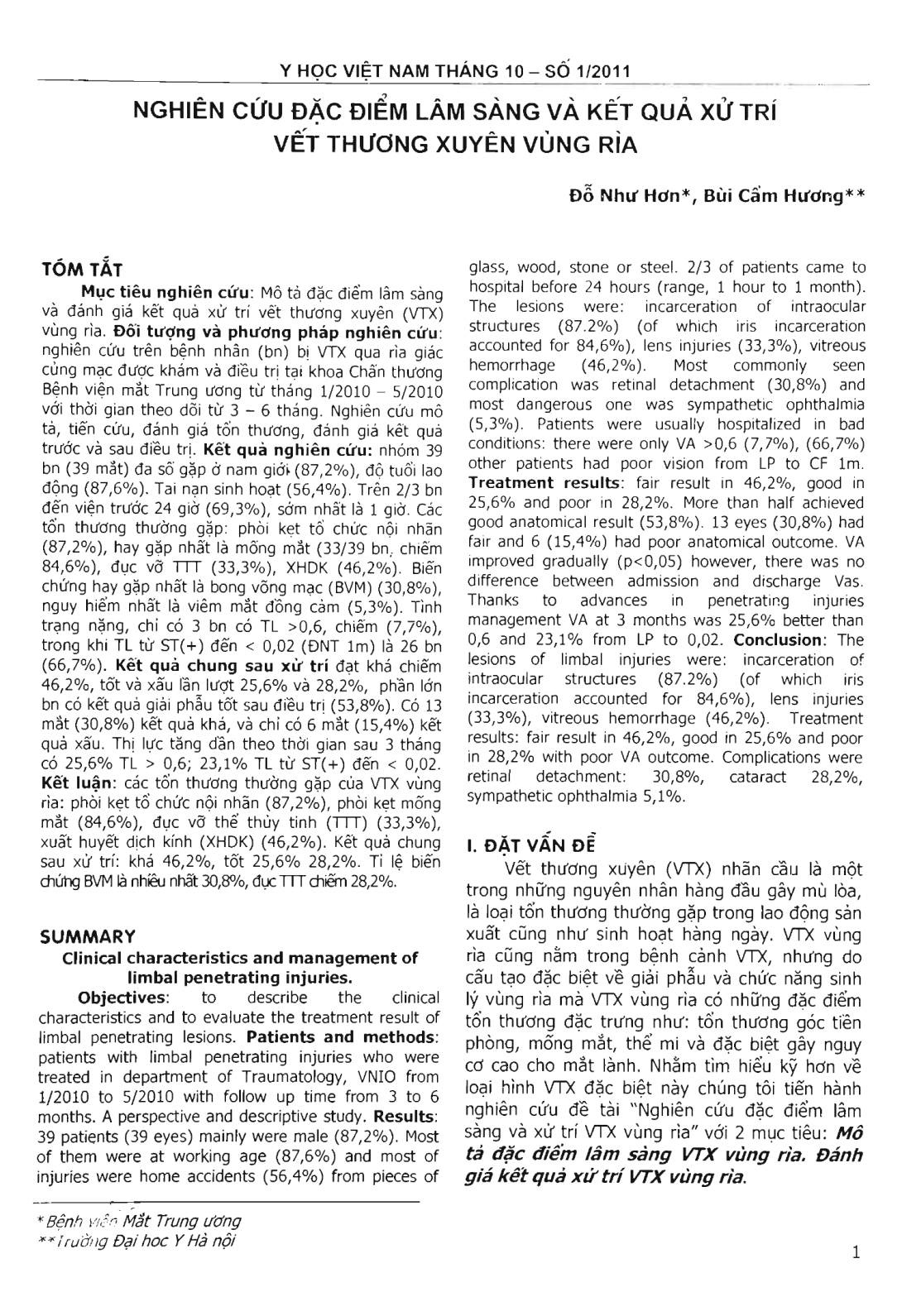
Objectives: to describe the clinical characteristics and to evaluate the treatment result of limbal penetrating lesions. Patients and methods: patients with limbal penetrating injuries who were treated in Department of Traumatology, VNIO from 1/2010 to 5/2010 with follow up time from 3 to 6 months. A perspective and descriptive study. Results: 39 patients (39 eyes) mainly were male (87.2 percent). Most of them were at working age (87.6 percent) and most of injuries were home accidents (56.4 percent) from pieces of glass, wood, stone or steel. 2/3 of patients came to hospital before 24.hours (range, 1 hour to 1 month). The lesions were: incarceration of intraocular structures (87.2 percent) (of which iris incarceration accounted for 84.6 percent), lens injuries (33.3 percent), vitreous hemorrhage (46.2 percent). Most commonly seen complication was retinal detachment (30.8 percent) and most dangerous one was sympathetic ophthalmia (5.3 percent). Patients were usually hospitalized in bad conditions: there were only VA 0.6 (7.7 percent), (66.7 percent) other patients had poor vision from LP to CF 1m. Treatment results;: fair result in 46.2 percent; good in 25.6 percent and poor in 28.2 percent. More than half achieved good anatomical result (53.8 percent). 13 eyes (30.8 percent) had fair and 6 (15.4 percent) had poor anatomical outcome. VA improved gradually (p0.05) however, there was no difference between admission and discharge Vas. Thanks to advances in penetrating injuries management VA at 3 months was 25.6 percent better than 0.6 and 23.1 percent from LP to 0.02. Conclusion: The lesions of limbal injuries were: incarceration of intraocular structures (87.2 percent) (of which iris incarceration accounted for 84.6 percent), lens injuries (33.3 percent), vitreous hemorrhage (46.2 percent). Treatment results: fair result in 46.2 percent, good in 25.6 percent and poor in 28.2 percent with poor VA outcome. Complications were retinal detachment: 30.8 percent, cataract 28.2 percent, sympathetic ophthalmia 5.1 percent.
- Đăng nhập để gửi ý kiến
